Bif. San Amaro – Portas
CHARACTERISTICS
- Portela / Mercancías
- Portas / Mercancías
Line 828, which runs between the San Amaro and Portas junctions, corresponds to an old section of the Redondela – Santiago de Compostela railway line, the construction of which, in which various companies participated, began with the concession of the line in 1881 and the creation two years later, in 1863, of the Sociedad del Ferrocarril Compostelano de la Infanta Doña Isabel. This company was later bought by English investors and became the West Galicia Railway Company, which opened the first section, between Santiago and Villagarcía, in 1873. The long construction period was due to financial problems compounded by the economic crisis and serious damage caused by torrential rain that brought work to a standstill between 1866 and 1871.
The long construction period was due to financial problems [...]
On the other hand, the railway company from Medina to Zamora and from Orense to Vigo, MZOV, inaugurated the Redondela station in 1878 with the opening of the Guillarei-Vigo section and, after the Orense-Vigo line was put into service in 1881, it began to expand its network towards the north, with the aim of linking Vigo and Pontevedra, which it achieved with the opening of the Redondela-Pontevedra section in 1884. The possibility of linking Vigo with Santiago towards required the construction of 32 kilometres between Villagarcía and Pontevedra, for which two route alternatives were proposed, a coastal route passing through the towns of Cambados and Sanxenxo, and another more direct one that crossed Portas and Portela, which was the one finally chosen [1] [2] and which includes the section under study, the San Amaro-Portas junction. This connection between Villagarcía and Pontevedra was built by the West Galicia Railway Company, which put it into service in 1889.
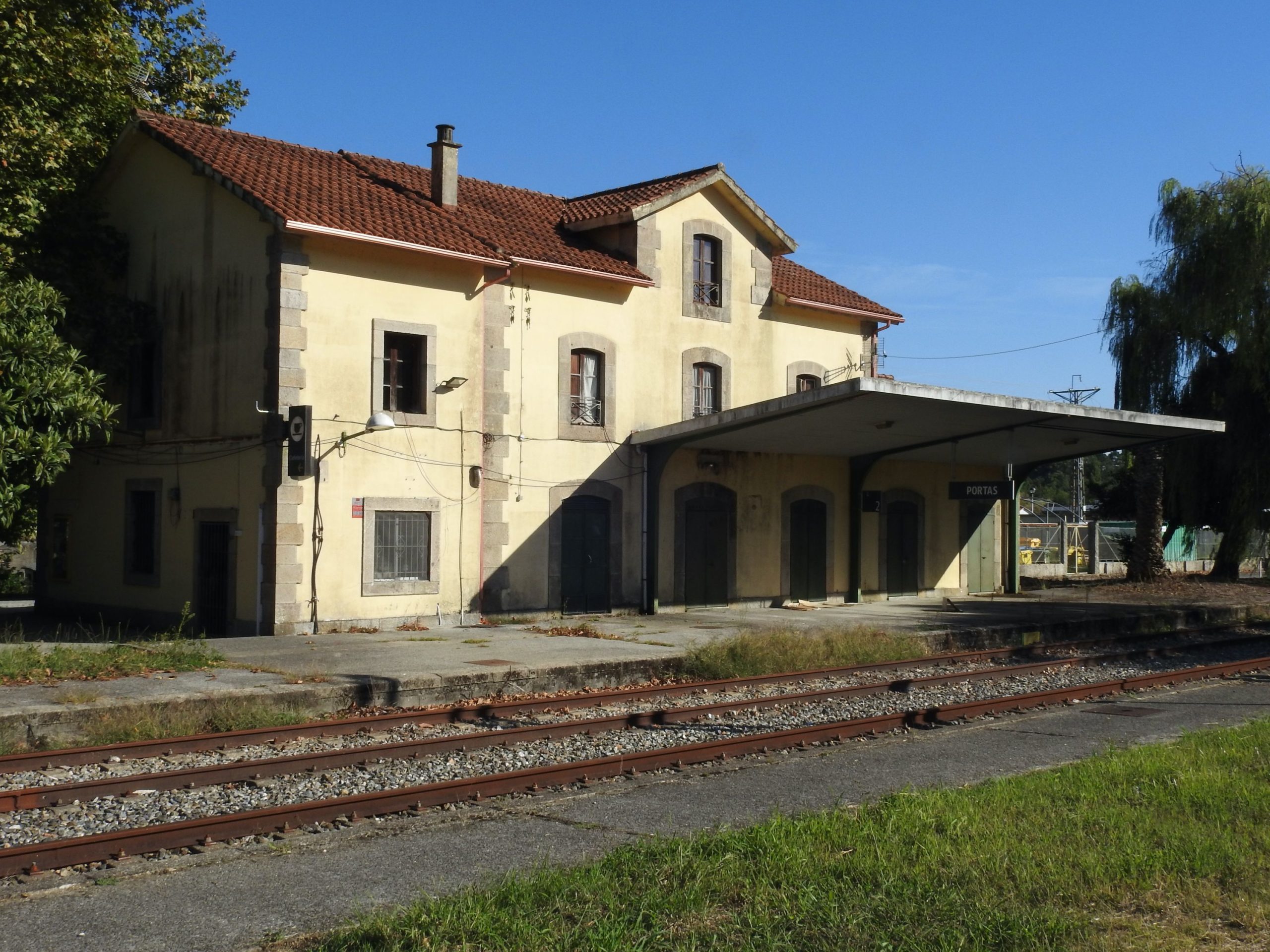
Apartadero - cargadero de Portas (Pontevedra)
In 1928 the West Galicia Railway Company was absorbed by MZOV, which only a year later became part of the National Railway Company of Western Spain, a state-owned company created to maintain rail service in this area of the country, jeopardised by the economic problems of the various private companies that operated there.In 1941, when the Iberian gauge railway network was nationalised, the line became part of RENFE.
In 1941, when the Iberian gauge national railway network was nationalised, the line became part of RENFE.
Traffic on this section of the line was never very heavy, despite the industries located in the vicinity. It had several private sidings, including one that served the sugar factory in the municipality of Portas and one that still exists today for Cementos la Robla. During the 1990s, the only regular services were the Teco train, which was responsible for transporting urban waste to Sogama, the collector trains between Vigo and A Coruña, which transported materials to other stations on the line such as Vilagarcía, Pontecesures and Escravitude, and the transport of cement, which remained constant over time.
As for passenger traffic, it hardly changed at all during these years, except for the introduction of regional trains.
Traffic on this stretch of road was never very heavy, despite the industries located in the surrounding area.
In 2005, with the extinction of RENFE, under the framework of Law 39/2003 on the Railway Sector, the line came under the control of Adif, like the rest of the RFIG (General Railway Network) in the State.
Between 2002 and 2015, major improvements were made to increase the speed of the so-called ‘Atlantic Axis’ between Vigo and A Coruña, including the construction of new variants and sections, leaving many stations and stops on the original line without service. An example of this was Portas station, which stopped offering passenger services in 2008, when the new Vilagarcia – Portela de Barro section was put into service. To address this situation, a new line was created between Bifurcación San Amaro and Portas. [2]
Between 2002 and 2015, major improvements were made to increase the speed of the so-called ‘Atlantic Axis’ [...]
In 2024, trains travelling along the Atlantic High Speed Axis can divert between the San Amaro junction and the Faxil junction in order to provide a service to Portela station, which has two trains a day to Vigo and Santiago de Compostela and Pontevedra and one train a day to Pontevedra. [3] However, beyond the Faxil junction, as far as the old station at Portas, only goods trains run, mainly dedicated to the transport of cement. [1]
The line offers very limited possibilities for tourism promotion, as it is currently configured, since its ends do not manage to connect centres of interest, as its terminus stations are far from Pontevedra and Caldas do Rei.
However, beyond the Faxil junction, only goods trains run as far as the old station at Portas. [...]
The line runs in a north-south direction, with the southern half embedded in the valley of the Da Gándara river, which flows southwards into the Pontevedra estuary, while the northern half of the line runs along a tributary of the Umía river, which flows south of the wide Arousa estuary. Therefore, the line crosses a watershed, in a landscape characterised by eucalyptus plantations, either in use or recovering, with a mixture of pine.
Category C2.
Abandoned and partially dismantled disused railway line.
Photographic report
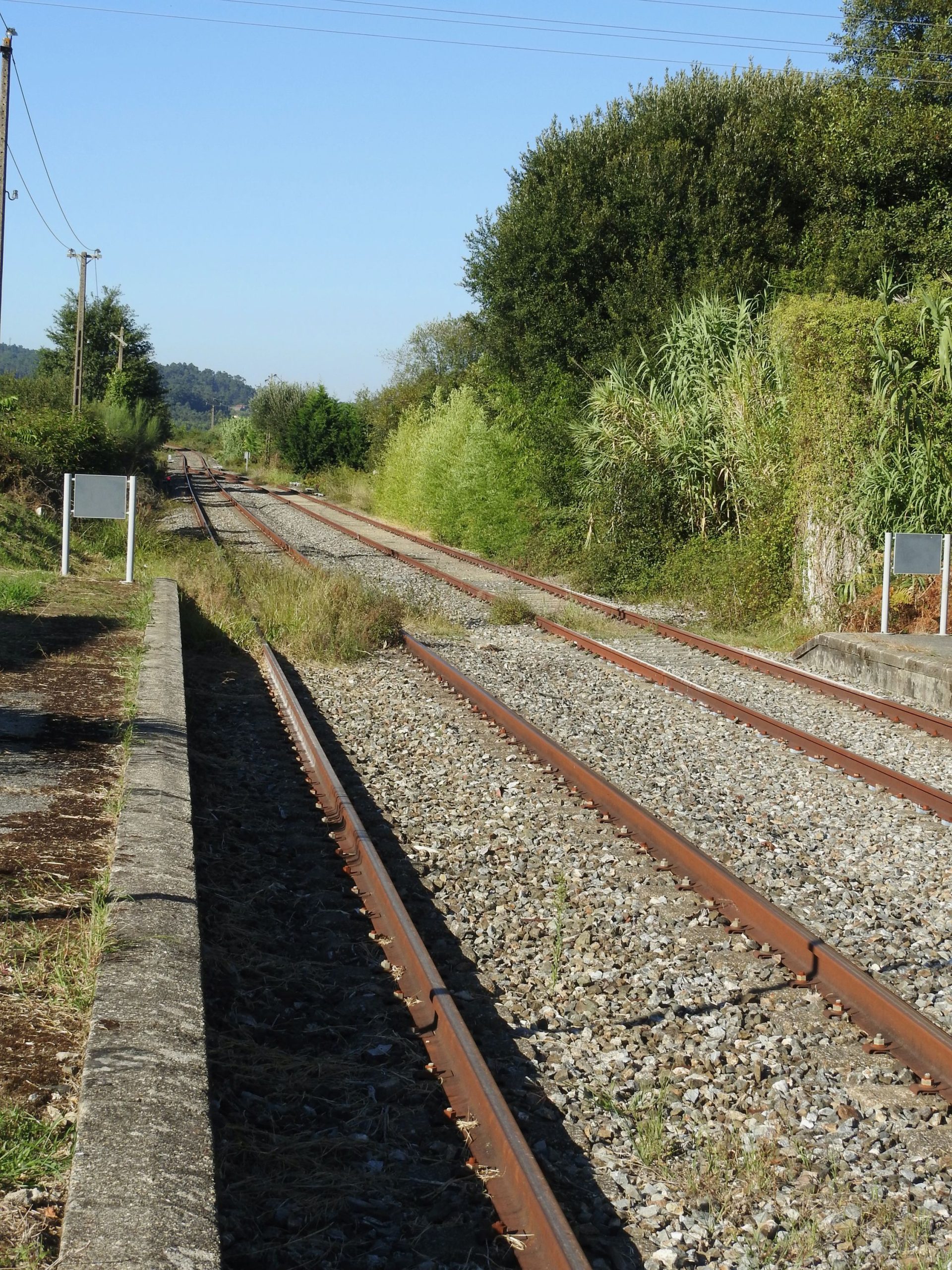
Vista de la Línea 828
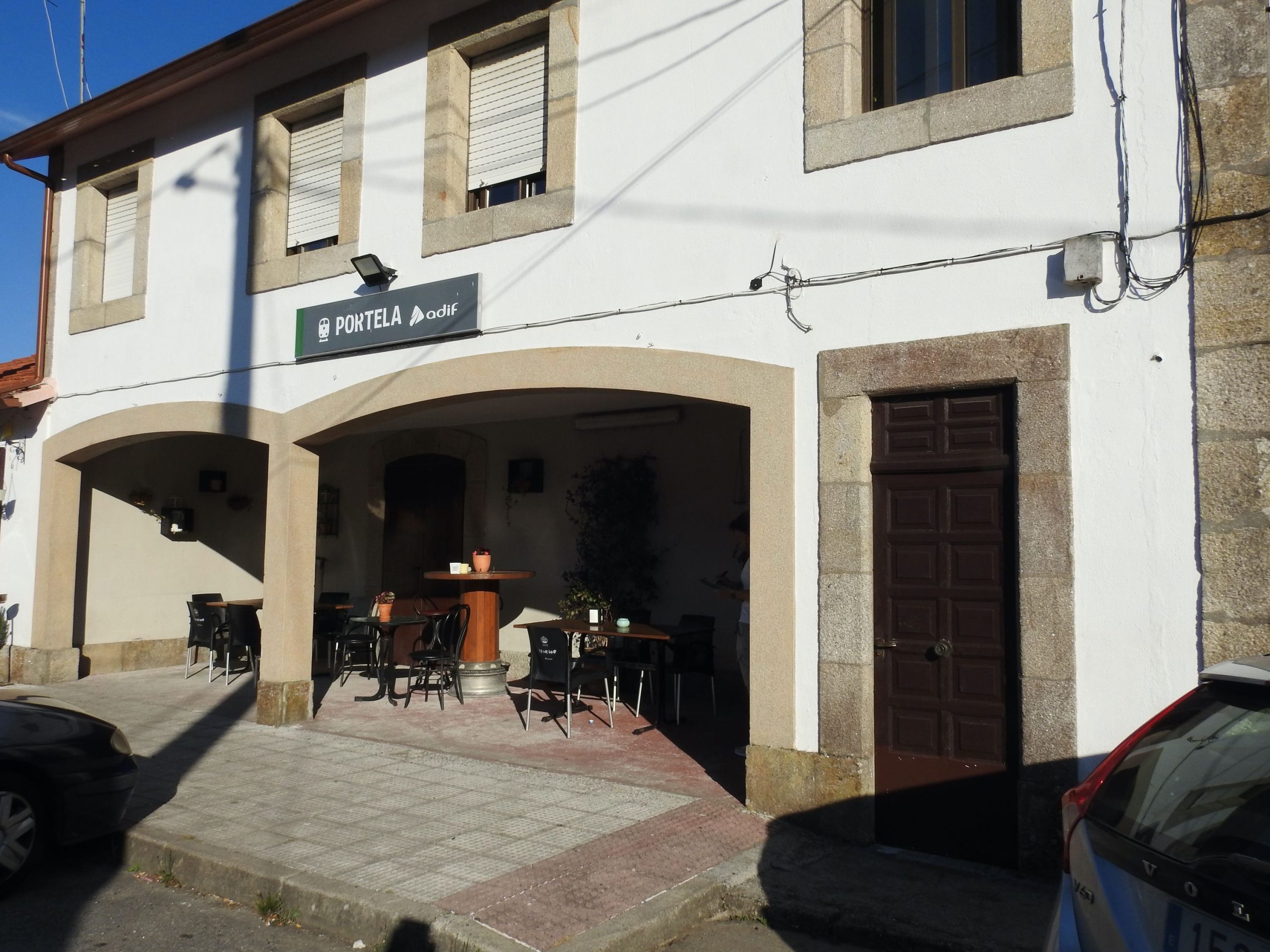
Apartadero de Portela (A Coruña)
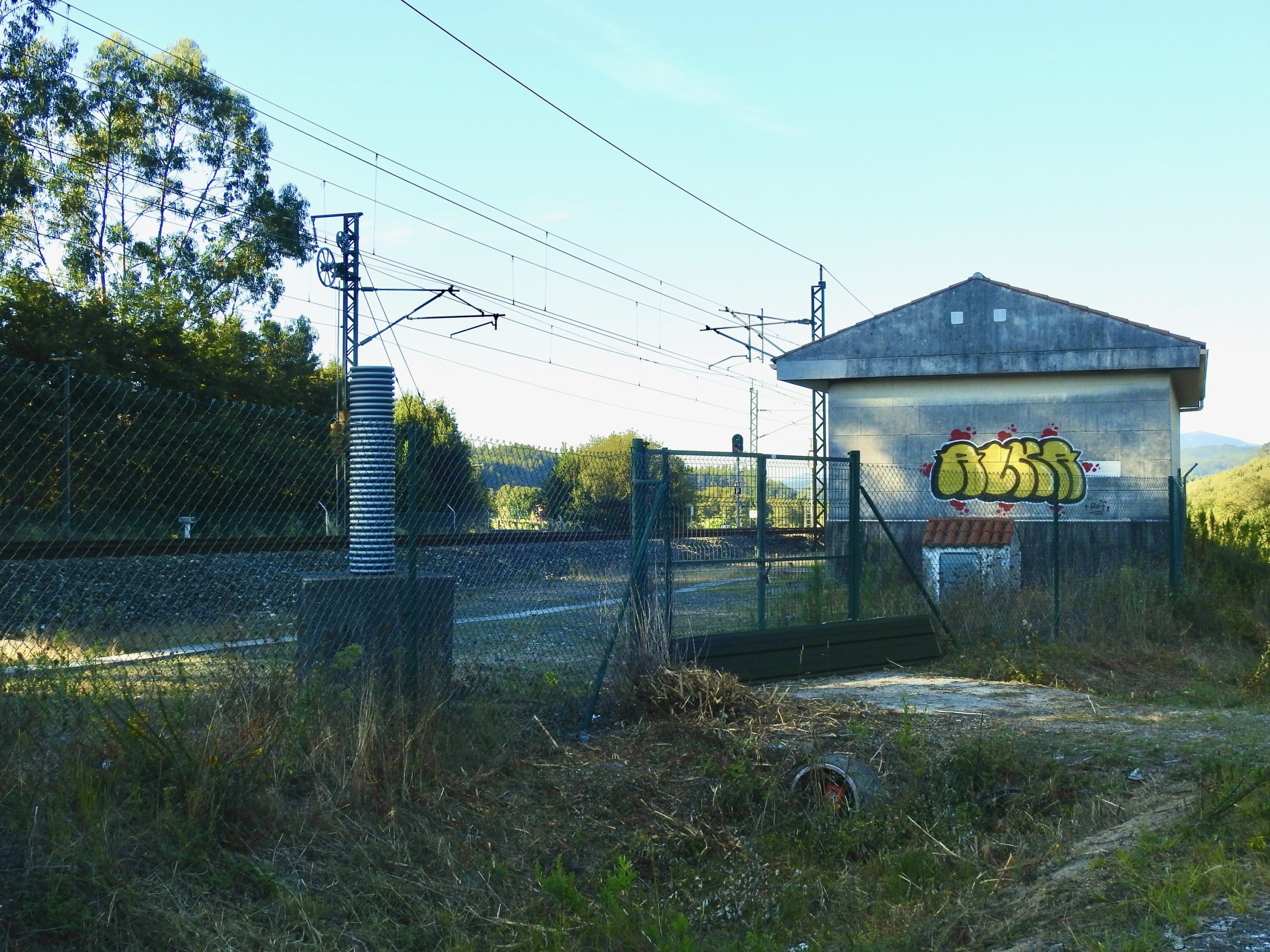
Estación de Faxil (A Coruña)
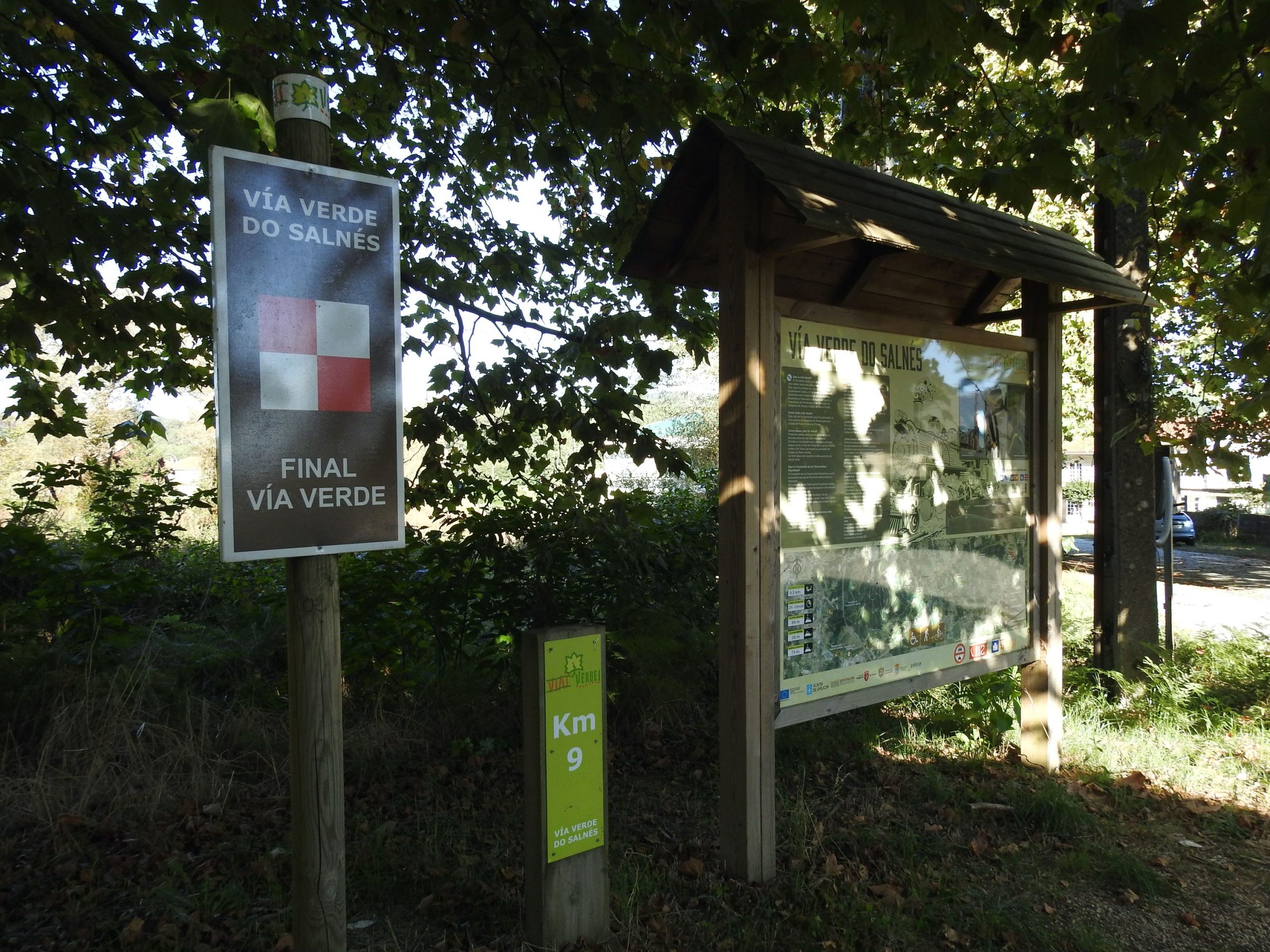
Cartel informativo en Portas (Pontevedras)
References
-
M. R. Bugarín, MAPA FERROVIARIO DE GALICIA MAPA DE LAS ACTUACIONES PROPUESTAS POR EL EIXO ATLÁNTICO DEL NOROESTE PENINSULAR PARA LA MODERNIZACIÓN DE LA RED FERROVIARIA DE VÍA ANCHA DE GALICIA, Cuadernos de Cooperación del Eixo Atlántico. Eixo Atlántico do Noroeste Peninsular. Ver referencia
-
P. Martínez, «Trenoroeste», Blog divulgativo de la historia ferroviaria en el Noroeste de España. [En línea]. Ver referencia
-
Información web. Ver referencia